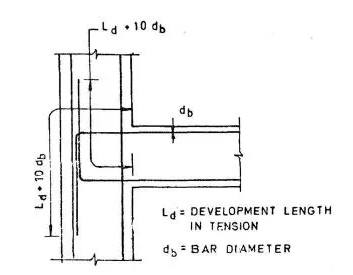What are the
Components of Highways?
A component of highway means that
item of work which is require to make the highway is. The components of the
highway include the
1. Right of Way (RoW)
2. Roadway Width
3.
Cross Slope or Camber
4. Carriageway or Pavement
5. Kerbs
6. Road Margins
These
component is an equal important with compare to geometric design means geometrics
component or element are design influenced by the psychology of the driver of the
vehicles, the characteristics of the vehicle and the traffic of the highway. If
we use all these component on skillful way, than highway safety is ensure.
 |
| Typical Drawing of Roadways |
The basic components of a highway
are explained briefly
1. Right of Way (RoW)
The
right of way is the total land area acquired for the construction of the
roadway along its alignment.
The right of way width is governed
by:
- Width of formation: It depends on the category of the
highway and width of roadway and road margins.
- Height of embankment or depth of cutting: It is
governed by the topography and the vertical alignment.
- Side slopes of embankment or cutting: It depends on the
height of the slope, soil type etc.
- Drainage system and their size which depends on
rainfall, topography etc.
- Sight distance considerations: On curves etc. there is
restriction to the visibility on the inner side of the curve due to the
presence of some obstructions like building structures etc.
- Reserve land for future widening: Some land has to be
acquired in advance anticipating future developments like widening of the road.
2. Roadway Width
Roadway land width is defined as
the width of the road should be enough to accommodate all the elements of the roadway cross section, any future widening of
the road and any public utility facilities that will be installed along the
roadway. RoW is the area of the road acquired for carriages way + other
necessities + future extension
3.
Cross Slope or Camber
Cross Slope/camber is the slope that
is provided in the transverse direction of the pavement or carriageway. The
cross slope is provided to drain off the rainwater from the road surface. If we
provide inadequate cross slope results in the flooding of water over the
pavement, which results in deterioration of the highway.
The
value of the slope is dependent on the type of rode, type of materials
used for road construction and the severity of rainfall in the
region. Generally, the value of cross slope varies from 2%-4%
4. Carriageway or Pavement
The portion or area of the highway or the road over which the
traffic is meant to move is called the pavement or the carriageway. Width of the carriage way or the width of the pavement
depends on the width of the traffic lane
and number of lanes. Width of a
traffic lane depends on the width of the vehicle and the clearance. Side
clearance improves operating speed and safety.
The maximum
permissible width of a vehicle is 2.44 and the
desirable side clearance for single lane traffic is 0.68 m. This require
minimum of lane width of 3.75 m for a
single lane road. Traffic
lane is defined as the carriageway or the or the pavement that is designed for
the movement of one lane of traffic. However, the side clearance required is
about 0.53 m, on both side and 1.06 m in the center. Therefore, a two lane road
require minimum of 3.5 meter for each
lane.
5. Kerbs
Kerbs indicate the boundary
between the pavement and the shoulder. Curbs are desirable to be constructed
for urban roads.
6. Road Margins
The portion of the
road beyond the carriageway is known as road margin. Various elements that form
the road margins road margin includes:
a)
Shoulders
b)
Bus
Bays
c)
Parking
lanes
d)
Sidewalks
or footpaths
Shoulders: These
are provided along the road edge and are intended for accommodation of stopped
vehicles, serve as an emergency lane for vehicles and provide lateral support
for base and surface courses. These also act as a service lane for the vehicles
that have broken down.
The shoulder should be strong enough to bear the weight of a fully
loaded truck even in wet conditions. The shoulder width should be adequate for
giving working space around a stopped vehicle.
Bus
Bays: Bus bays are provided by recessing the kerbs for bus stops.
They are provided so that they do not obstruct the movement of vehicles in the
carriage way. They should be at least 75 meters away from the intersection so
that the traffic near the intersections is not affected by the bus-bay.
Parking
Lanes: Parking lanes are provided in urban lanes for side
parking. Parallel parking is preferred because it is safe for the vehicles
moving on the road. The parking lane should have a minimum of 3.0 m width in
the case of parallel parking.
Footpath : Footpath are exclusive right of way to pedestrians, especially
in urban areas. They are provided for the safety of the pedestrians when both
the pedestrian traffic and vehicular traffic is high. Minimum width is 1.5
meter and may be increased based on the traffic. The footpath should be either
as smooth as the pavement or smoother than that to induce the pedestrian to use
the footpath.




0 Comments